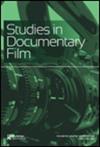Which species of Tortricidae leafrollers are key insect pests in South Australian vineyards?
IF 0.8
4区 综合性期刊
Q3 MULTIDISCIPLINARY SCIENCES
Transactions of the Royal Society of South Australia
Pub Date : 2018-07-03
DOI:10.1080/03721426.2018.1510656
引用次数: 4
Abstract
ABSTRACT Light brown apple moth, Epiphyas postvittana (Lepidoptera: Tortricidae) is regarded as the key insect pest in Australian vineyards and it is also an important pest of apples and citrus. E. postvittana is indigenous to Australia and has a wide geographical distribution. Recent observations suggest that leafroller species other than E. postvittana may be causing damage in grapevine canopies. A study of tortricids was undertaken in Adelaide Hills and McLaren Vale vineyards, South Australia. A total of 407 specimens of Tortricidae were collected from grapevine canopies. Molecular techniques were used to identify species. The mean prevalence of E. postvittana per sample was 91.0% in 2014/15 and 96.2% in 2015/16. Larval Acropolitis rudisana, lucerne leafroller, Merophyas divulsana and cotton tipworm, Crocidosema plebejana were also found on the grapevine canopy at much lower densities for the first time. The presence of leafroller species A. rudisana, M. divulsana and C. plebejana on grapevines confirms these species of Tortricidae may also be present in South Australian vineyards. This study confirms that E. postvittana is the most common tortricid pest in Adelaide Hills and McLaren Vale vineyards and also illustrates the utility of molecular methods in determining with confidence the species identity of larval Tortricidae.南澳大利亚葡萄园的主要害虫是哪些种类的卷叶虫?
摘要浅褐苹果蛾(Epiphyas postvittana,鳞翅目:蛾科)是澳大利亚葡萄园的主要害虫,也是苹果和柑橘的重要害虫。E. postvittana原产于澳大利亚,地理分布广泛。最近的观察表明,除了E. postvitana之外,叶卷虫物种可能会对葡萄树冠造成损害。在南澳大利亚的阿德莱德山和麦克拉伦谷葡萄园进行了一项研究。在葡萄树冠层共采集到蝽科昆虫407只。利用分子技术对物种进行鉴定。2014/15年和2015/16年每个样本的平均维氏后肠杆菌患病率分别为91.0%和96.2%。在葡萄藤冠层上也首次以较低的密度发现了鹿角虫、苜蓿卷叶虫、红叶虫和棉尖虫。在葡萄藤上发现的卷叶虫种类A. rudisana、M.病菌和C. plebejana证实了这些卷叶虫种类也可能存在于南澳大利亚的葡萄园中。本研究证实了在阿德莱德山和麦克拉伦谷葡萄园中,后维塔纳是最常见的蛾类害虫,也说明了分子方法在确定幼虫蛾种类识别方面的应用。
本文章由计算机程序翻译,如有差异,请以英文原文为准。
求助全文
约1分钟内获得全文
求助全文
来源期刊
CiteScore
1.40
自引率
12.50%
发文量
17
审稿时长
>12 weeks
期刊介绍:
Published since 1880, the Transactions of the Royal Society of South Australia is a multidisciplinary journal that aims to publish high quality, peer-reviewed papers of particular relevance to Australasia.
There is a particular focus on natural history topics such as: botany, zoology, geology, geomorphology, palaeontology, meteorology, geophysics, biophysics, soil science and environmental science, and environmental health. However, the journal is not restricted to these fields, with papers concerning epidemiology, ethnology, anthropology, linguistics, and the history of science and exploration also welcomed.
Submissions are welcome from all authors, and membership of the Royal Society of South Australia is not required.
The following types of manuscripts are welcome: Reviews, Original Research Papers, History of Science and Exploration, Brief Communications, Obituaries.

 求助内容:
求助内容: 应助结果提醒方式:
应助结果提醒方式:


